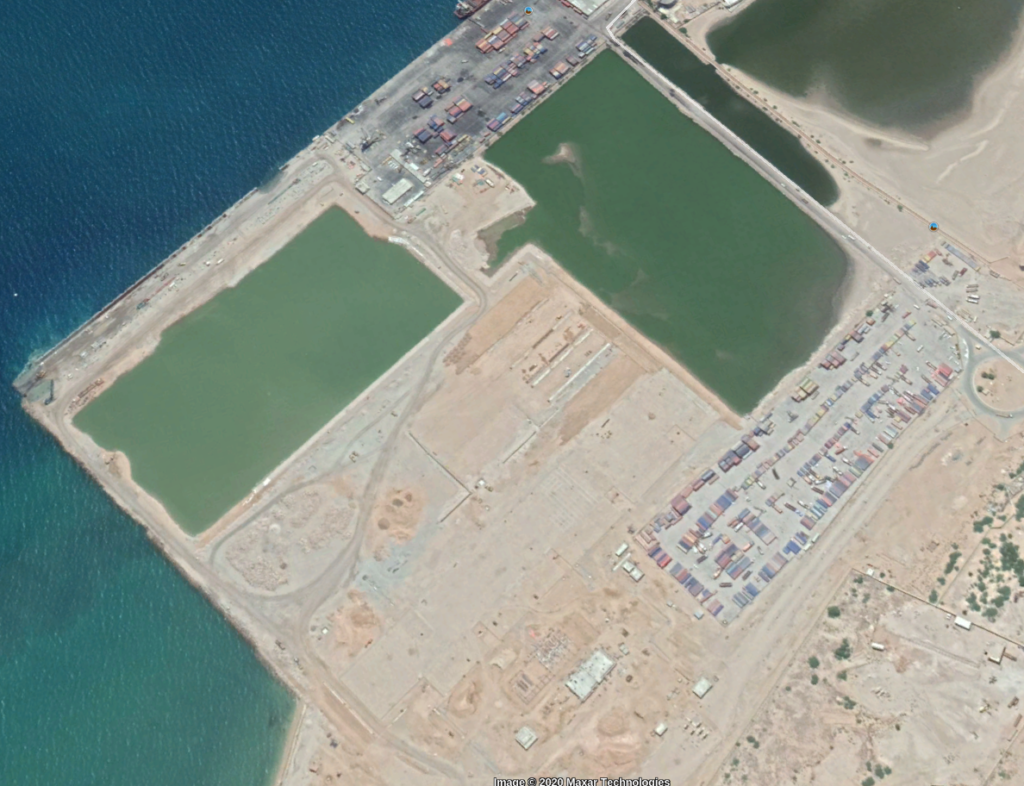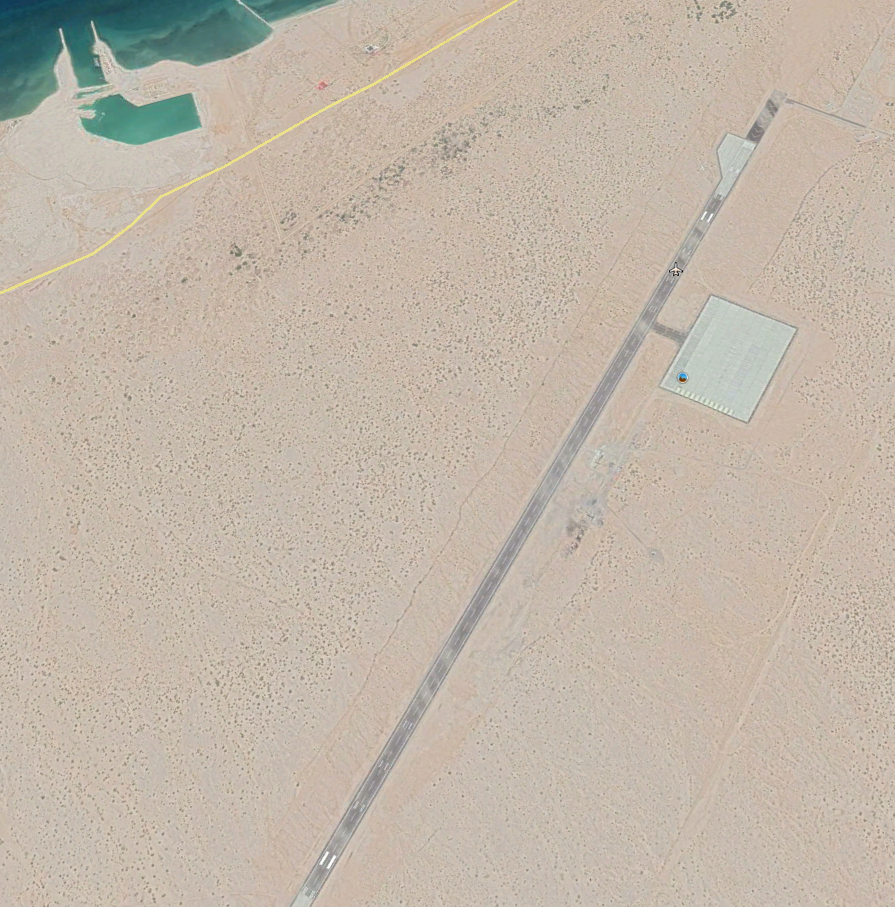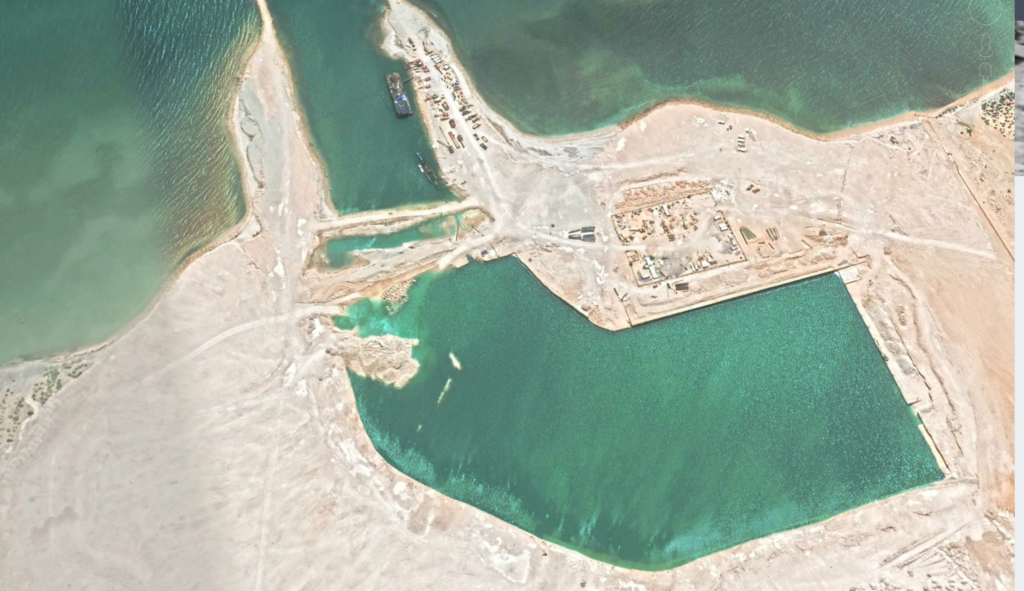Local politics
The council has become a place for competing interests, not competing ideas
This case study purports to analyse how local governance functions in Somaliland, and how it is evolving under the influence of national politics, international assistance, social pressure and economic policies. This section is largely the result of interviews that I conducted in Berbera in the course of three visits, and my own observations. There are few written resources on this town, besides Somali news articles.
Berbera is a town of about 75,000 inhabitants[1] that has developed a reputation for being well managed according to Somaliland standards. Of the population, about 65% is Habar Awal (Ciise Muuse principally, but also Sacaad Muuse), 15% Habar Younes, 10% Habar Jeclo and 10% other clans and minorities. As the only international port of Somaliland, it provides a significant part of Somaliland’s revenue (in terms of import and export tariffs) and most of the economic activity in town is centred around the port. This includes fishing and fish processing (canned fish, as cold storage chains do not yet function correctly); livestock holding and shipping (affected by the almost permanent Saudi livestock ban); wholesale trading of imported consumer goods (cars, dry foodstuffs, industrial and consumer equipment); storage (fuel and warehouses of, among others, the World Food Program); and , transportation (entirely by trucks).
This solid economic base has allowed Berbera’s municipality to develop relatively sound policies. Although the income of the port accrues to the central government, businesses pay local taxes. But it is especially the management of public land that has made the city prosperous. This started during the post-independence year, when then mayor Hassan ‘Gadweyne’ (“long-beard”) refused to privatise public land, which in those years was being claimed by clans or sold by corrupt officials all over Somaliland. Berbera is so dry (see satellite photo above) that no clan claims the surrounding areas as pasture and Gadweyne dismissed all claims and requests to sell municipal land.
Public land is a planning tool, and a city without public land has less options. The management of public land provided a steady, if rather small, income for the town of Berbera, mostly by leasing it out to businesses. The local council elections of 2002 resulted in a broad-based group of councillors, who may have lacked expertise but seemed to be serving their communities. The town of Berbera developed apace. After the departure of Gadweyne, public land was sold but at a small scale.
This changed when Siilaanyo came into power. His attempts to facilitate access to Berbera’s opportunities for the business elite around him resulted in a politicisation of the town. In the local council elections of 2012, financial stakes were already high. Prospective councillors could offer bribes to be elected, in the expectation that they could earn back the money once they were on the council.
Members of the new local council were persuaded, apparently by Siilaanyo, to allocate some prime plots of municipal land to Habar Jeclo. This caused tensions within the community, so the council started selling and giving away land to Habar Awal businesses and wealthy individuals too. Its members became rich in the process and kept some of the best plots for themselves. But a considerable amount of the funds raised through the sales did make it into the municipal coffers. Moreover, the local council also gave free plots to the poor citizens of Berbera and even to minorities from Berbera and beyond. Pieces of very arid land far away from the road suddenly were worth something, and could serve as collateral for a loan, for example. Real estate fever became widespread, driving asunder families and clans, and filling the courts with land cases. Through speculation the desert land around Berbera, which had previously only had cultural value, became expensive overnight.
Now Berbera has become rich; in 2018 the town invested 20 million USD in city works, which is much more than Hargeisa. The port attracts youth from all over Somaliland, pushed by the drought and the lack of opportunities in their own region, who come looking for a job. Dubai Ports World had promised, in its contract with the government of Somaliland, to employ local workers, but it has imported its workforce from abroad (as in Dubai, they are mostly South Asians and stay in containers near the port)[2]. However, the opportunities for the jobless are a bit better than in the rest of the country.
International support
As one interviewee put it, the council can make plans, and the city has rather good implementation capacity, but the level of the councillors is not sufficient to establish policies. “The council has become a place for competing interests, instead of competing ideas”, this young civil society activist said. UN Habitat sent international experts to work on a masterplan on a multimillion dollar assistance program, but instead of a masterplan they produced a glossy brochure, reminding that they were there only to support, that the ownership was Somali and therefore it was up to the town of Berbera to produce its own masterplan (although local capacity to create a masterplan is utterly lacking). When the town turned Habitat down on a third ‘assistance’ contract, the organisation invited the mayor to Marrakesh for a fine weekend; he changed his mind and UN Habitat is again working in the mayor’s office; but no-one expects any useful output.
I will name two other UN assistance projects to Berbera which have become iconic in my mind of how aid only fuels corruption or goes to waste. One is a bus terminal built on the wrong side of town, the other an empty repatriation centre for Somalis returning from Yemen. The bus terminal is the result of the kind of aid micromanagement that has become standard in the world of development. UNDP funds under the Joint Program on Local Governance and Decentralized Service Delivery were earmarked for transportation infrastructure, and Berbera ticked the boxes for the kind of location these funds could be spent (the project website is here). The funds were disbursed to a local contractor who built a wall around a recently privatised vast plot of land. My interlocutors did not know whose plot it was. The project cost 250,000 USD. There is no chance that it will ever serve as a bus terminal, because it is to the East of the town and far from any roads. Quite certainly, most of the money was pocketed by local councillors and/or senior administration members.
The Berbera ‘bus terminal’
The repatriation centre is a sprawling compound in the middle of the new town, managed by several UN agencies and international NGOs as a transit camp for Somalis returning from Yemen. The state-of-the-art facilities only processed 1294 people in 2017[3], because there is insufficient funding, it seems, to rent enough boats to repatriate the hundreds of thousands Somalis that live in camps in Yemen, according to international organisations. The playground, kitchen and other facilities are rarely used, and the staff of international agencies have nothing to do.
One of the interviewees spoke about the negative consequences of another international assistance program, a World Bank-run ‘Somaliland Business Fund’. The idea sounds nice: to give grants to people who come up with good business ideas, on the basis of a competition. “Everybody came up with ideas and started thinking about creating businesses” he told me; “people who had no interest in money previously, started dreaming of becoming rich. That’s a bit in Somali nature, so it was not a difficult transformation. Only a few proposals were selected, and even the winning ones came to nothing. If you get free money, no strings attached, you are not stimulated to create a successful business. Only loans work, and you would think the World Bank would know that.” He went on to remember that Somalis used to have their own financial systems, such as ‘hagbad’, the saving and credit cooperation organisation, where people pool their resources to make investments in turn. Such financial systems are nearly extinct, in part because of the top-down showering of money by international organisations.
A positive counterexample is the new Berbera public library, established by a committee of citizens eager to provide this facility to the people. It is housed in a grand new building that will also house offices and a future museum, next to the Ottoman mosque and British colonial buildings. The committee members were proud to point out that they had not received any foreign funding but had all contributed resources themselves and collected them among the businesses and wealthy individuals from Berbera; the library was being used, both times I visited, by young people.
A civil society activist on municipal environmental policies
Farhan ‘Rakad’ runs an environmental NGO called ‘Plant a tree, plant hope’ (Geed Beer, Rejo Beer) that has planted 500 trees, he says. He is also the manager of Allore Hotel and a writer (he published a self-help book in Somali called ‘The Narrow Way’)
Planting trees makes no sense as long as you have animals roaming around. Goats will eat each sapling they encounter. So we first had to remove the animals from Berbera. How? Every household keeps some animals, we are pastoralists. After years of discussion, the municipal council decided to ban animals from Berbera’s streets, to give trees a chance to grow. Without trees, this hot city is unbearable. After the decision, there was a month of awareness raising, to give people a chance to remove their animals from the town, giving them to pastoralist cousins. City officials went around in cars with megaphones on the roof. Then the implementation started, seriously, with fines for any offender. After a while, with no animals on the street, officials started going house-to-house and they took all remaining animals. This is the way to govern: a solid decision-making process, awareness-raising, gradual but forceful implementation. They are trying to achieve the same in Hargeysa, but inefficiently.
The base
Key elements of the agreement between Somaliland and the United Arab Emirates, from the Somaliland perspective, are that the UAE will recognize the Somaliland passport and provide security assistance to Somaliland, notably in the fields of piracy, ‘terrorism’ and illegal fishing. Besides, the UAE will invest in infrastructural development of the airport, the city of Berbera and the road to the Ethiopian border, in the process also creating jobs. However, for the time being little progress is made on all these issues, while construction of the base has begun at a very slow pace.



https://twitter.com/GeesiSL/status/1284375271110397955/photo/2 Pictures posted on Twitter by @GeesiSL from June 2020
| CONFLICTS SURROUNDING THE PRIVATIZATION OF BERBERA HARBOUR – July 2016 On 24 May, Dubai Ports World and the government of Somaliland entered into an agreement for the upgrading and management of Berbera port facilities. The company will manage the port for 30 years and will rejuvenate the port, expecting it to become one of the busiest harbours in East Africa. Ethiopia announced its intention to use the port for its imports and exports. The signature of the USD 422 Million framework agreement with Somaliland in May 2016 stirred up a controversial debate among Somalilanders; some praised the agreement while others thought that the agreement was illegal and a misappropriation of the state’s wealth by the ruling elites. On 7 June, three people including the spokesman of Waddani youth were arrested by Somaliland police at Dalxiis hotel in Hargeisa. The youth were reportedly organizing a debate about the recently reached agreement about the port of Berbera. Police arrested the individuals before the meeting took place. On 18 June, Berbera citizens demonstrated against the DPW world delegation when it visited Berbera. The protesters expressed their anger about the deal between Dubai Ports World and Somaliland authority. They burnt old tires at the main roads of the port city. The police came to the area and dispersed the demonstrators. The Somaliland police later arrested three of them. They also arrested the chairman of the opposition UCID party in Saahil region, accusing her of planning the demonstrations. Background of the conflict The dispute between the local clans of Essa-Muse and Habar-Jeclo has been simmering for the last couple of years since the current president Silanyo who is from Habar-Jeclo clan took the office of the president. This reporting period has witnessed several violent armed and unarmed incidents between Essa-Muse and Habar-Jeclo locals in the East of Berbera (Saahil) region. This is the continuation of a protracted conflict between both clans that started in the early 90s after displaced herders of the Habar-Jeclo clan from Togdheer and the west of Sanaag region settled to the East of Berbera. Before 1991 the economic and political spheres of eastern seashores of Berbera district were dominated by the Essa-Muse and Makahiil of Sacaad-Muse clans. The arrival of displaced Habar-Jeclo herders driven by the prolonged droughts and civil wars in 1992 led to a profound modification of the social balance. In 1992 the Habar Jeclo local traders led by prominent local trader from Habar-Jeclo/Reer-Younes sub clan known as Indho Deero started to use the natural harbour of El Gerde (23 km East of Berbera) to import and export their goods and livestock, building these facilities in areas previously dominated by Habar-Awal sub-clans. In 2003 the Essa-Muse clan members started an armed resistance against Habar-Jeclo domination. While remaining a minority in demographic terms, the Habar-Jeclo clan became dominant in the political and economic spheres from the late 90s onwards. The hostilities between the two clans resumed when the Somaliland president approved the animal quarantine of Indho Deero in Berbera as well as the building of a cement factory by Dahabshiil, who also hails from the Habar Jeclo. Despite several clan reconciliation efforts, conflict has steadily scaled up since then. In the beginning of 2012, tensions flared up between government forces and clan militia of Essa-Muse, who have historically dominated trade in Berbera, and had previously been authorized by the government to build a cement factory. The conflict then deteriorated considerably, triggering cycles of civil unrest, violent clashes, attacks on civilians and the mobilization of clan militia, fired by older grievances. June 2013 marked a new peak in violence between the two clans, when Habar-Jeclo clansmen led by their politicians, started the construction of new road to connect Berbera to Burco & Ceel Afweyn (the ‘Raaribul’ road). The clan elders of Essa-Muse denounced the involvement of Mr. Hirsi, Habar-Jeclo, who was the Minister of the newly structured Somaliland Road Authority, and who thus had privileged access to official support. These conflicts simmered on until the present day. Early March 2016, Essa-Muse clansmen ambushed a vehicle transporting the deputy governor for Saahil region (Berbera) and the police divisional commander and killed the latter near Biyooley in Sheikh district. The local authorities imposed a curfew in Berbera, set up checkpoints and arrested seven Essa-Muse elders, as well as the deputy governor of Saahil who had not been killed in the ambush. Days later the police captured 11 clansmen who they accused of killing the police division commander and transferred them to Hargeisa prison, where they were tried and convicted. In short, the privatization of Berbera Port, which Essa-Muse traders, port workers and other clansmen believe to be against their interests, has been decided without consulting them, reviving old grievances with the Habar-Jeclo. |
[1] As noted earlier in this chapter, population estimates vary wildly; the UN World Population Prospects speaks of 499,000 inhabitants in 2020; but a comparison on google earth with a town with similar size, density and habitat in Sudan (al Jabalayn) suggests there may be less than 75,000 inhabitants. UNICEF Somalia gives a population of 63,000 schoolgoing children in the city for 2011/12; their figures tend to be highly exaggerated, so I will stick to my own estimate of 75,000. Furthermore, in Berbera many people migrate to cooler areas (Sheekh or Hargeysa) in the hot summer months, and thus have two residences.
[2] One interviewee joked: “Siilaanyo probably didn’t read the contract”. Infrastructural assistance of different kinds has also been promised in the contract, but has not materialised yet.
[3] according to the staff member of one of the NGOs working there
